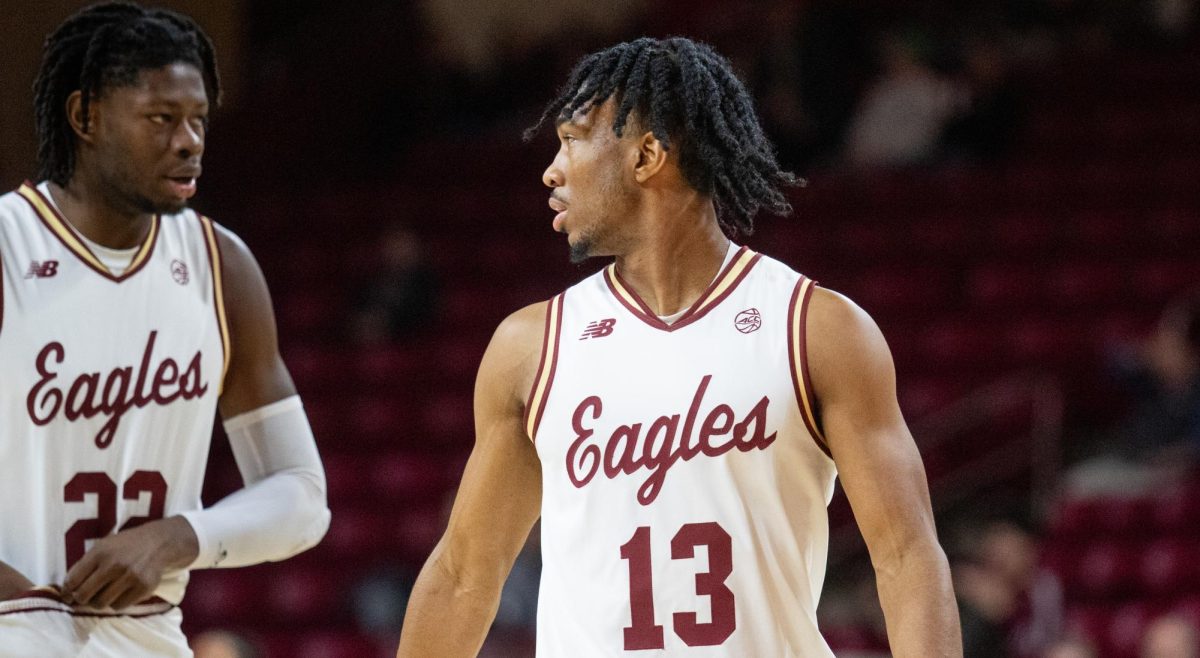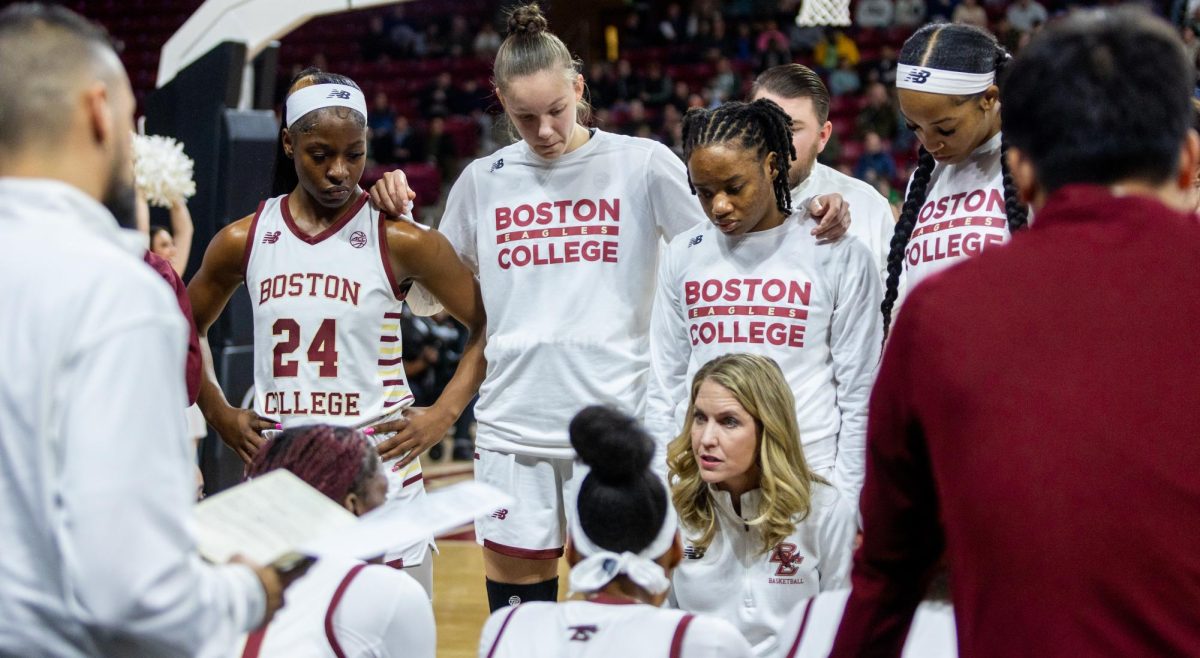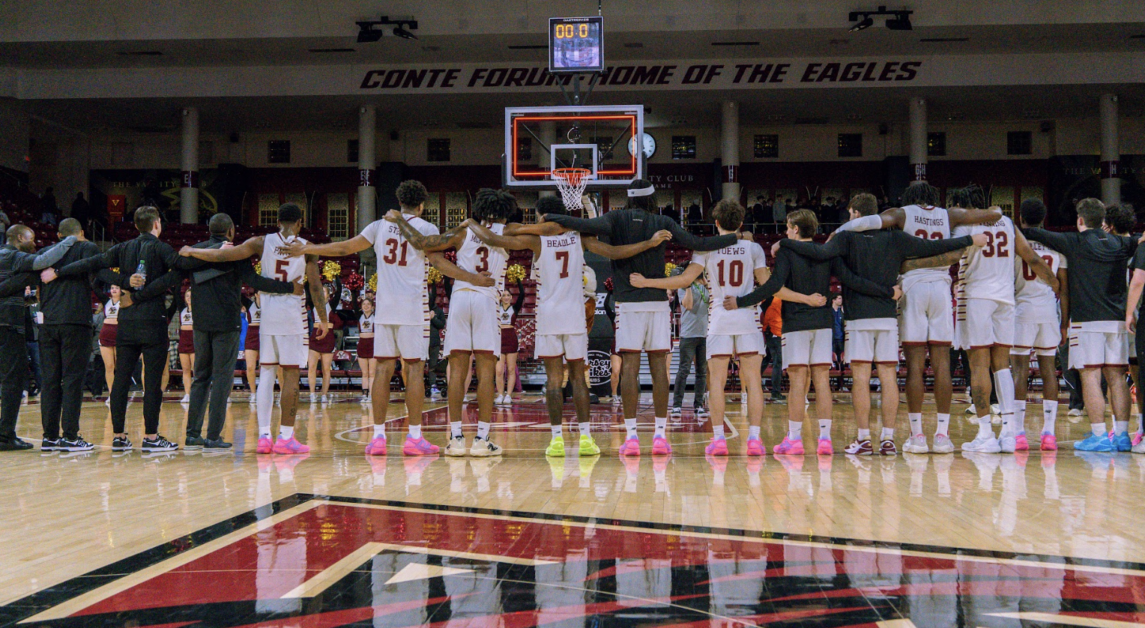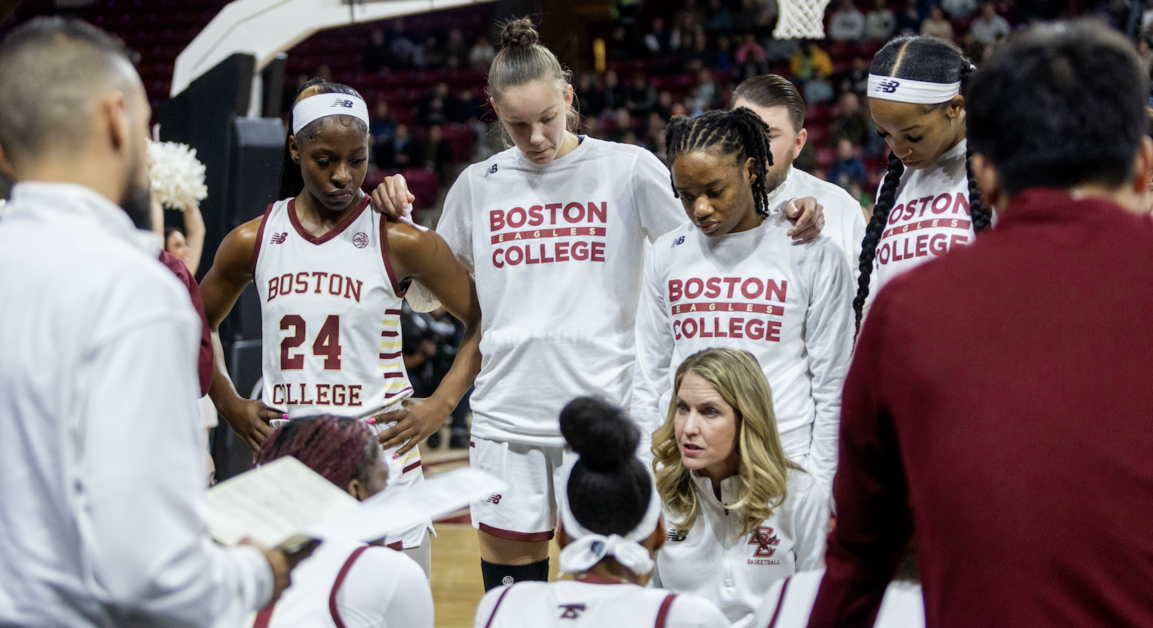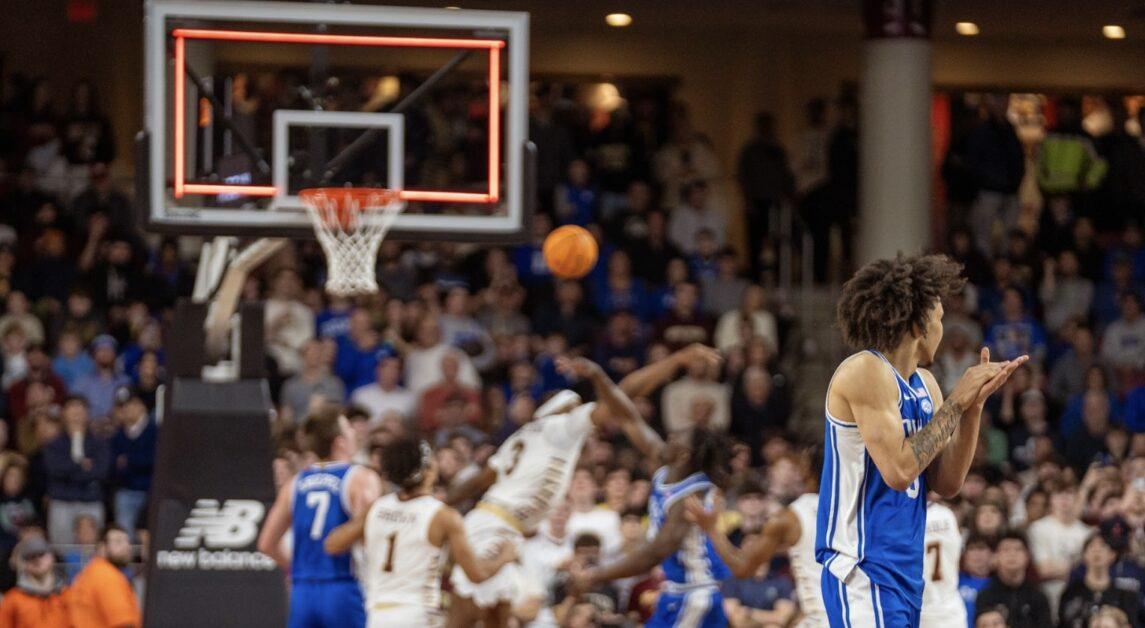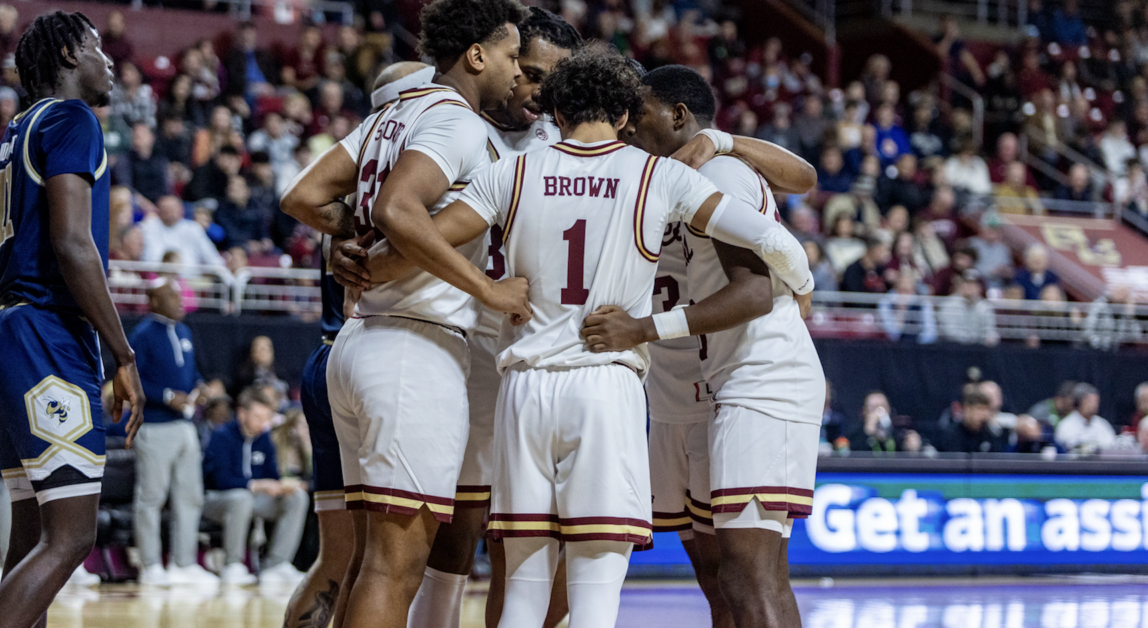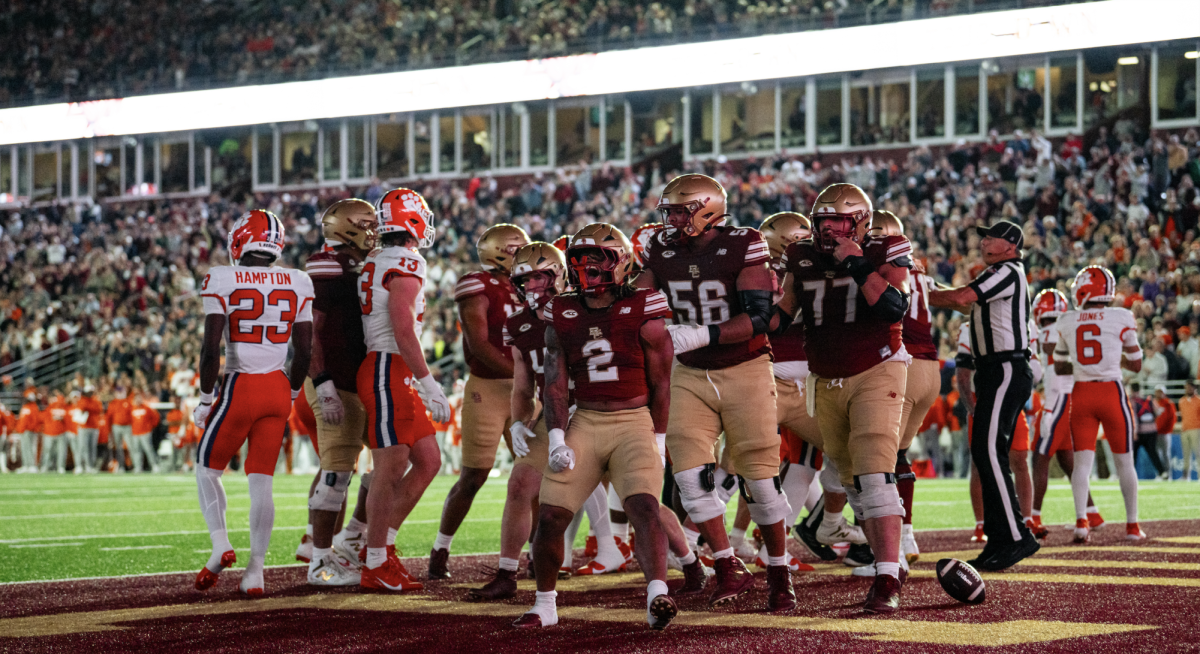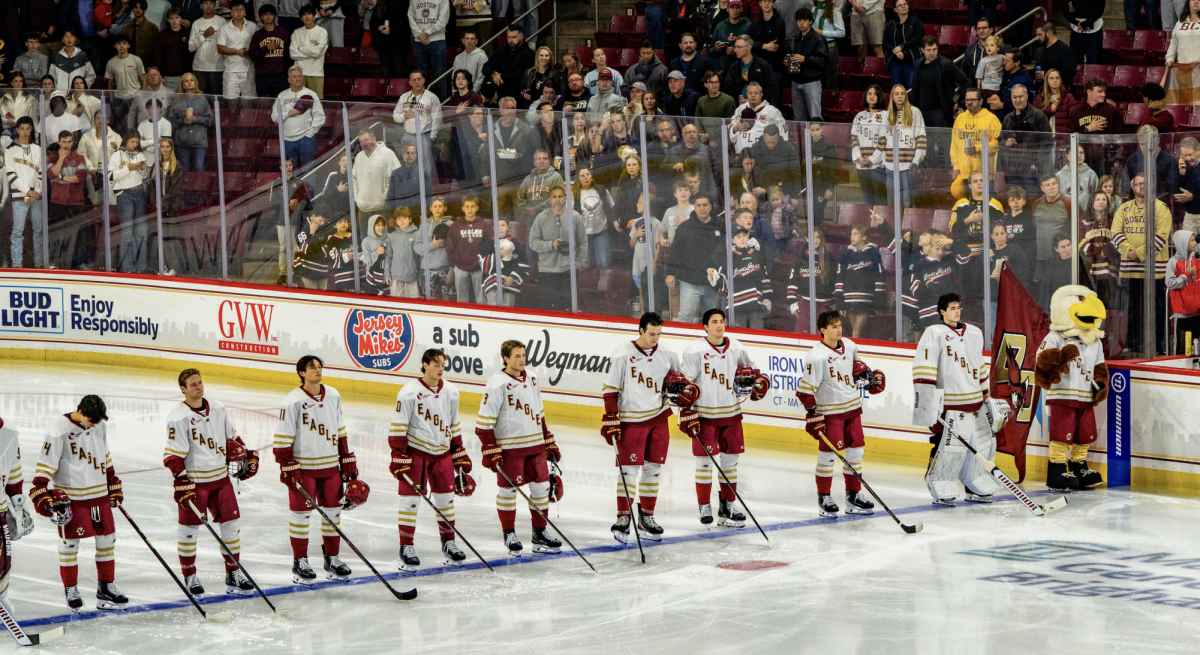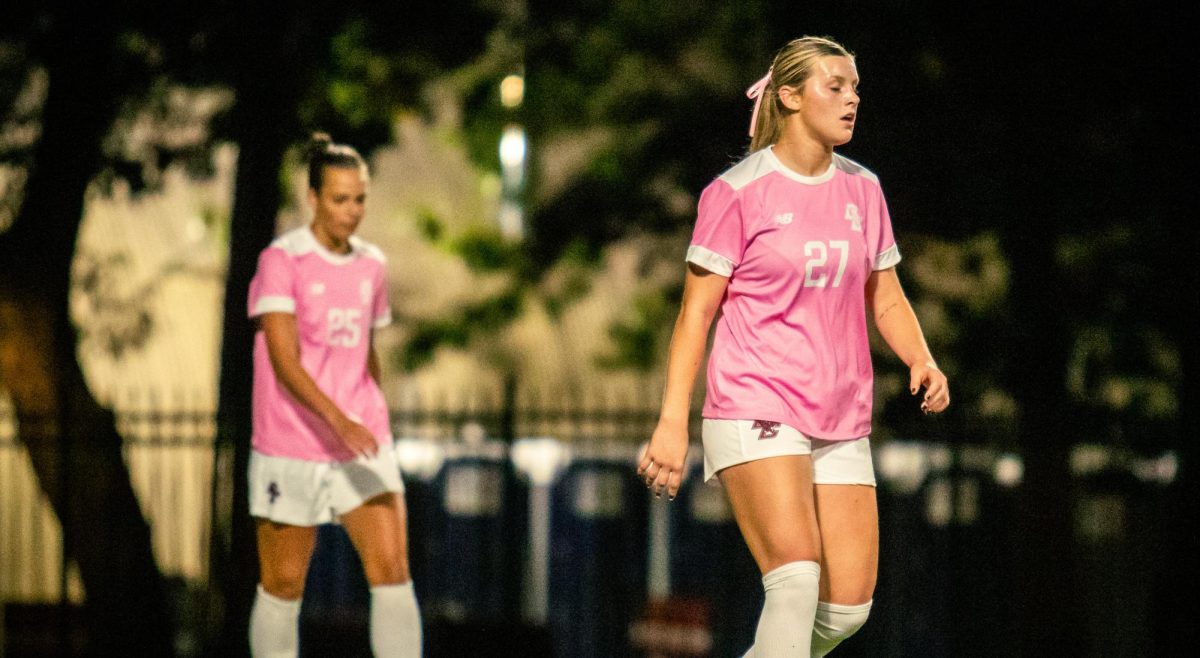ESPN analyst and former Duke Blue Devil Jay Bilas visited the Boston College basketball team in early October. Bilas talked to the team about winning, and what it takes to finish close games.
“[Bilas] came in and actually talked to us about habits, and there are reasons why teams win late in games,” said junior forward Ryan Anderson before the 2013-14 season began. “It’s not anything between Xs and Os most of the time, it’s from their habits. Good teams have good habits.”
Returning the most experienced roster in the ACC, BC was expected to finally have built up good enough habits to pull out wins in close games after two seasons of steady progress. That hasn’t happened. The Eagles are 0-3, with losses to Providence on the road, UMass at TD Garden, and Toledo at home last night.
BC has been in each game in the second half, but has eventually relinquished control of the game each time. The losses haven’t been the result of a few 50-50 balls bouncing the way. This team shouldn’t be 3-0. It is, unfortunately for the Eagles, a deserved 0-3 start, and although the offense hasn’t been perfect, the real issues are on defense.
The dramatic decline in defensive performance starts with BC’s lack of an adjustment to the new rule enforcement, but the issues don’t end there.
Adjusting To The New Rules
Head coach Steve Donahue changed things up defensively this year. He planned on having his whole team, point guard through center, switch every screen. With so many similarly sized players—Garland Owens, Alex Dragicevich, Eddie Odio, Patrick Heckmann—the ease of switching as opposed to a hedge-and-recover outweighed the risk of constant mismatches. Donahue also planned on mixing up his formations, much more so than he had in the past. He had man and trapping presses drawn up to go along with the man-to-man and zone defenses in the halfcourt.
The Eagles tried out the new defensive strategies in their scrimmages, seeing how they would play out with the new rule enforcement intended to open up offensive movement, and everything was fine. There wasn’t an abundance of hand-check calls, the defense didn’t look bad, and the team seemed to be adjusting fine. BC didn’t even get in the bonus during its scrimmages. Donahue got calls from other coaches talking about how difficult defending under the new rules had become. He didn’t know what they were talking about.
That lack of preseason preparation was evident last night.
“They drove it, and they went and got it,” Donahue said of Toledo. “That’s part of the strategy of most coaches against us, particularly with the new rules. It’s been a hard transition for us, and way harder than I saw coming, because I didn’t see it in the first four scrimmages.”
The help defense was atrocious. It’s become BC’s biggest weakness defensively, and a majority of the struggles appear to be an inability to adjust to the officials. In a lot of cases, the help defense doesn’t come, and when it does come the attempts to affect or alter shots are ineffective. Here is one example.
Toledo’s Julius Brown caught the ball off a skip pass from Nathan Boothe out of a trap. He was wide open on the arc, but as Eddie Odio closed out Brown went straight to the rim. He knew the gameplan. Brown wasn’t touched, finishing at the rim for an easy layup. Neither Owens, Anderson, or Olivier Hanlan—all of whom are at least somewhat in his path to the rim—altered the shot.
Through three games, this is what BC’s help defense has become. The Eagles either foul or they throw their hands up while sliding out of the way allowing an easy bucket. Neither of those things amount to good help defense. While other teams have adjusted to the tighter foul calls by establishing position and allowing the offensive player to create content or adjusting shots in other ways, BC has almost exclusively either fouled or gotten out of the way. Toledo shot nearly 70 percent from the field in the second half, going 16-of-23 while still managing to hit 22 of its 29 attempts from the foul line. Those numbers are ridiculous.
A Lack Of Box Outs
Nothing can say as much about BC’s defensive rebounding woes as these images from last night can. Apologies, they’re a little grainy.
That’s five instances in which five BC players watched a shot go up, didn’t box anyone out, and Toledo pulled down an offensive rebound. That doesn’t have anything to do with the rules. It’s a collective mental lapse, and it’s killing the Eagles. Toledo isn’t even particularly athletic up front or all that good at offensive rebounding, but the Rockets knew they had a chance to attack the glass for easy points and they went for it.
Donahue wants his big men to play fewer minutes. His plan last night was to give 30 minutes a piece to Anderson and Odio, while working in Magarity for 25 minutes, rotating one member of the trio out at a time. This could keep the frontcourt fresh so that they could help on the glass. It worked for the first 10 minutes. BC was finally forcing an opponent to single-shot possessions. Then Magarity got in foul trouble and all of the rebounding issues came back again.
This isn’t only an issue with the bigs, though. The guards have been just as bad with the defensive rebounding. BC is okay at making the first rotation on a play, but the second rotation from the guard rarely comes. This leads to opposing big men standing untouched underneath the hoop waiting for missed shots. Even reliable defenders like Joe Rahon and Owens have been guilty of this time at times.
Another issue creeps up with this porous defensive rebounding. It makes the offense more confident. Toledo’s guards were jacking up jumpers with ease, knowing that no shot is a bad shot against BC because you are almost as likely to get the ball back as the Eagles are to grab an offensive board.
Switched Up
Donahue didn’t have many answers last night to specific questions about why the defense wasn’t working.
“I’ve got to look at everything,” Donahue said, when asked if a poor adjustment to switching screens has led to the defensive problems. “I don’t think so, but I’m not going to discount it either.
“I thought they had our number the whole game. We tried to switch it a couple times, mix it up. We got in foul trouble, tried to weather that storm with the zone a little bit. I wish I got an answer for you there. I’m not comfortable with our defense.”
But it’s apparent after watching the game for a second time that there are serious issues when BC switches screens. Donahue said the Eagles are already pulling back from it a bit—no longer switching screens between the one and the five and also trying to keep Hanlan or Rahon on the ball—but they might have to fall back even further. It’s leading to too many mismatches, open shots, and blown assignments.
The most notables mistakes with switching have come on jumpers off pick-and-roll when a big gets put on a guard.
Here is Brown coming off a ball-screen as Anderson gets switched onto him. It’s midway through the second half, play hasn’t stopped for a while, and the BC power forward is probably worn down. Before the season, he said he had worked himself into good enough shape to check guards on switches. He hasn’t actually been that bad at it, but he sags on this play, allowing an open jumper which Brown knocks down. Odio has been just as guilty of this, consistently allowing guards to pull up with space when he’s been switched onto them.
These bigs-for-guards switches have likely worked fine in practice—they’ve even worked okay early in games—but this has been BC’s strategy for every play and it isn’t working down the stretch. With the minutes that Anderson and Odio have to put up, they can’t reliably force the guards to shoot a contest pullup going to their off hand or to get rid of the ball.
The Zone
This group of players wasn’t able to effectively pull off a 2-3 zone defense the past two years, and that is still the case. Donahue said he went zone to try to slow down his team’s fouling in the man defense. Not only did BC continue to foul while running the zone, the Eagles also gave up more open looks and allowed easier offensive rebounds.
The boxing out has been bad enough when the BC players have a specific man to find and keep off the glass. Teams have done an excellent job of getting a shot off right after a swing, forcing the Eagles to stop and think about who they need to box out rather than actually doing it. There has been more shot-watching in the 2-3 rather than the man.
Teams have also attacked the zone easily. Toledo found plenty of success just by screening one of the top defenders, leading to either easy jump shots or drives straight to the rim. The Rockets also found this shot against BC’s 2-3.
It’s a simple play. The ball-handler dribbled straight past the top man on the zone, attacking the wing defender. BC got turned around, evident by the fact that Hanlan and Odio have switched places. During that same motion, Toledo’s Justin Drummond cut across the baseline to the corner and no one ran out to meet him. He had all day to shoot, and he sank a 3-pointer that helped spark a Toledo comeback. It was one of the most important plays of the game, and it happened because BC wasn’t communicating.
Owens needed to scream that Drummond is cutting corner, and Hanlan and Odio need to get someone on the ball and someone to drop. But there is no pointing from the players on this play and if there was anything said, it wasn’t communicated well enough.
Solutions
So, where do they go from here? First of all, BC needs to figure out this new rule enforcement if the team is going to turn things around. The players may not be able to guard the ball as well as they would like, but the help defense can improve. It’s still possible to affect drives. The Eagles can’t be timid out of a fear of fouling and not come over to help at all, which has happened too often.
Depth can help this some, and it can also somewhat help the rebounding problems. Fresher legs are always a good thing. Tired legs don’t lead to five guys watching a shot go up without boxing out, though. After three games, that can’t continue to happen.
The pick-and-roll defensive strategies need to be adjusted. Hanlan and Rahon are the most tireless players on the BC roster. Maybe more of the responsibility should be placed on them in the 1-5 or 2-4 ball-screens. Even going with a hard hedge and recover would make it easier on BC’s big men, since they wouldn’t have to stay with quick guards for a full possession.
Getting Lonnie Jackson back on Sunday, which Donahue said is likely to happen, should help some. He’s the most vocal player on the court. He’s not the best on-ball defender, but he makes everyone else better. No, Jackson can’t clean up all these issues. His leadership, effort, and defensive IQ might help out just enough, though, to start the clean up process. At this point, incremental defensive improvement is all BC can hope for.









